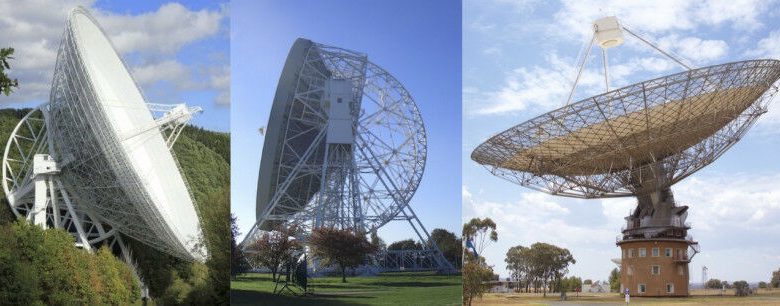Lovell telescope detects unparalleled behaviour from within reach magnetar

The 2 research makes use of information from the Effelsberg radio telescope in Germany (left), the Lovell telescope in the United Kingdom (heart), and Murriyang, the Parkes radio telescope in Australia (proper). Norbert Junkes / Mike Peel / Marcus Decrease A world crew of astronomers have made an important leap forward in working out the unparalleled behaviour of a in the past dormant famous person with an impressive magnetic grassland.
The use of the Lovell telescope at Jodrell Locker the researchers from the United Kingdom, Germany and Australia have loose fresh bright on radio emission coming from a magnetar, referred to as XTE J1810’197 .
Magnetars are one of those neutron famous person and the most powerful magnets within the Universe. At more or less 8,000 bright years away, this magnetar may be the nearest identified to Earth.
The magnetar is emitting bright which is strongly polarised and hastily converting. The scientists say this signifies that interactions on the floor of the famous person are extra complicated than earlier theoretical explanations counsel.
The consequences are printed in two papers within the magazine Nature Astronomy lately.
“Our findings demonstrate that exotic physical processes are involved in the production of the radio waves we can detect with sensitive radio telescopes. Moreover, we learned that magnetars are ultra-strong magnets in space which spin in complicated ways.”
Patrick Weltevrede, co-author of each papers and Senior Tutor in Pulsar Astrophysics at The College of Manchester Detecting radio pulses from magnetars is already extraordinarily uncommon; XTE J1810’197 is one in every of just a handful identified to assemble them.
XTE J1810’197 used to be first seen to emit radio indicators in 2003 ahead of going peaceful for neatly over a decade. The indicators have been once more detected via The College of Manchester’s 76-m Lovell telescope on the Jodrell Locker Observatory in 2018.
Since next, researchers on the College, in collaboration with institutes together with the Max Planck Institute for Radio Astronomy in Germany, Australia’s nationwide science company CSIRO and the College of Southampton had been intently gazing the magnetar.
The use of the Lovell, Effelsberg and Murriyang telescopes, researchers have since spotted major changes within the radio indicators coming from the magnetar, in particular in the way in which the bright used to be polarised, indicating that the magnetar’s radio beam used to be transferring its path in terms of Earth.
The researchers believed this used to be brought about via an impact known as independent precession the place the magnetar wobbles relatively because of negligible asymmetries in its construction, alike to a spinning lead.
Hastily, this wobbling movement reduced hastily over a couple of months and till it sooner or later cancelled altogether. This contradicts the theory proposed via many astronomers that repeating rapid radio bursts may well be brought about via magnetars present process precession.
Gregory Desvignes from the Max Planck Institute for Radio Astronomy in Bonn, Germany, and manage writer of one of the most two papers, mentioned: “We expected to see some variations in the polarisation of this magnetar’s emission, as we knew this from other magnetars but we did not expect that these variations are so systematic, following exactly the behaviour that would be caused by the wobbling of the star.”
“It was crucial to keep observing the magnetar with radio telescopes even when it was switched off, so we were able to catch it directly after the radio outburst. This is the first time we have had data sampled densely enough at just the right time to be able to resolve this precession and its damping, made possible through many years of dedicated monitoring of this source with large radio telescopes, including the Lovell Telescope at Jodrell Bank.”
However the reason why as to why the round polarisation adjustments, the place the bright seems to spiral because it strikes thru field, stay unsure.
Dr Marcus Decrease, a postdoctoral fellow at CSIRO, who led the Australian analysis the usage of Murriyang, CSIRO’s Parkes radio telescope, mentioned: “Our results suggest there is a superheated plasma above the magnetar’s magnetic pole, which is acting like a polarising filter. How exactly the plasma is doing this is still to be determined.”




